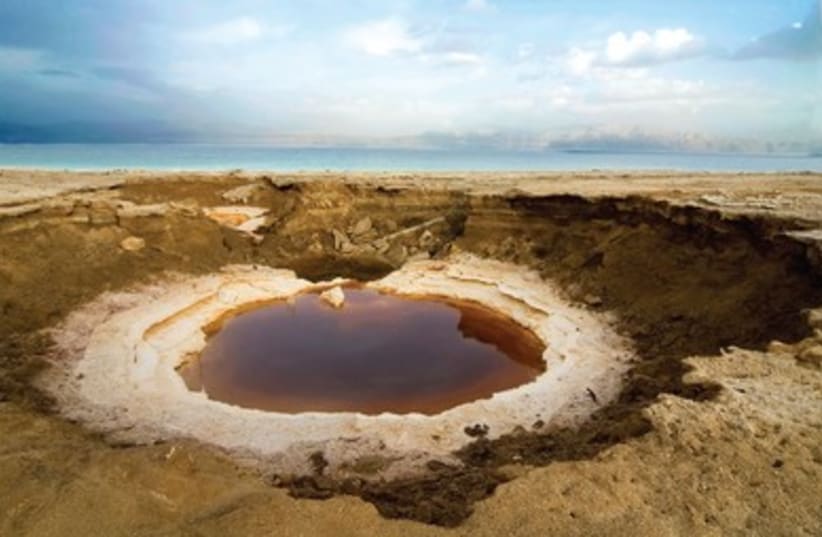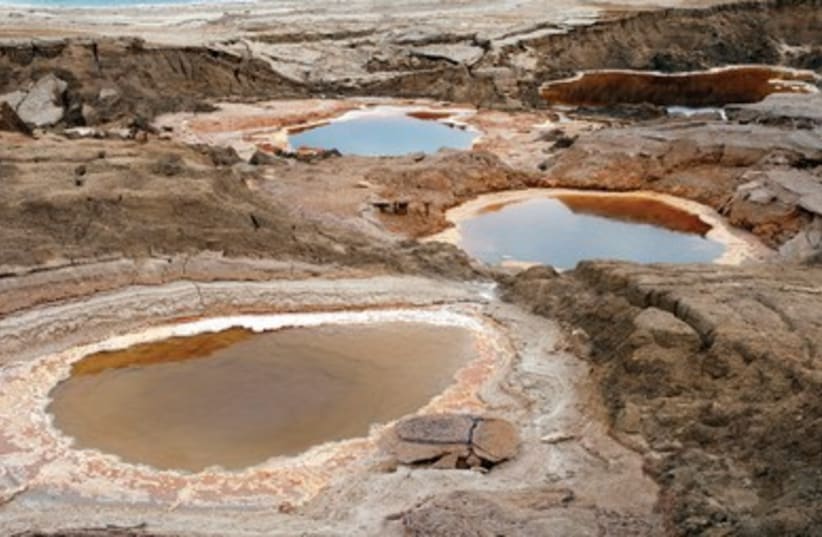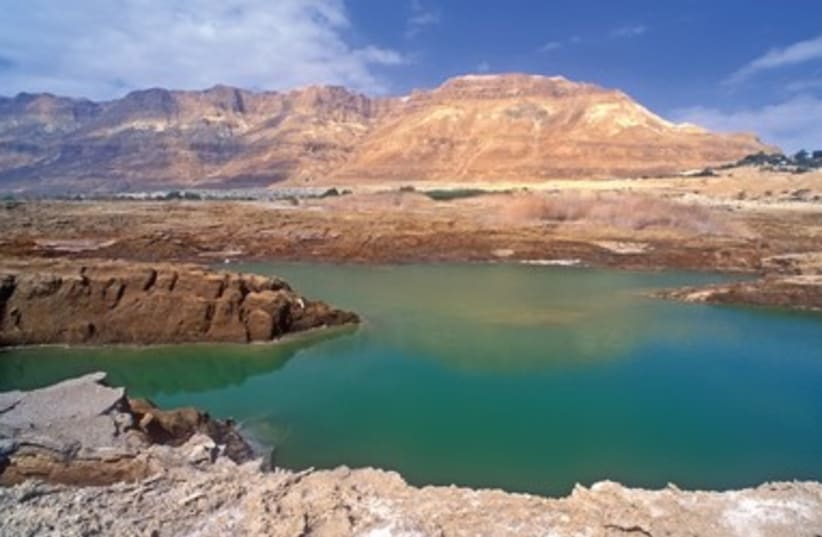




The Deganya dam in the south of Lake Kinneret (the Sea of Galilee) is the first reason. The dam blocks the fresh water supply from the Jordan River section that connects the lake with the Dead Sea. The second reason is the Israeli and Jordanian phosphate production plants situated along the south side of the Dead Sea. These factories need to evaporate large quantities of salt water to extract their mineral products. This results in slowly killing the already Dead Sea.The receding waterfront has triggered the formation of more than 1,500 sinkholes over the past 15 years. These sinkholes vary in size and depth and can be up to 20 meters deep. Some are shallow and wide, some are empty and others hold mineral-colored water.The vulnerable sinkhole area is a strip on the western side of the Dead Sea, 60 kilometers long and up to a kilometer wide, between the highway and the retreating waterline. Most sinkholes accumulate at specific sites determined by the geological character of the area.Lately, every year hundreds of new sinkholes appear, all formed as a result of the dissolution of an ancient salt layer 20 to 70 meters under the surface.Now, without the support of the Dead Sea salt water, underground water dissolves those salt layers, forming gaps that the upper layer fall into. The receding seawater by itself leaves numerous air pockets in the soil which increase the instability of the layers.The sinkhole strip is widening each year and affecting the human activity along it. Today it is very dangerous to enter the sinkhole-prone areas due to sudden collapses, which occur every day. Solutions for limiting the creation of sinkholes are based on renewing the water supply to the Dead Sea by opening the Deganya dam or bringing in regular seawater from the Mediterranean or Red Sea. One suggestion was the national project of the Mediterranean–Dead Sea canal. In the meantime, the production plants may need to curb their damaging activities until a viable solution to save the Dead Sea is found.
